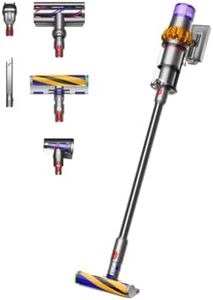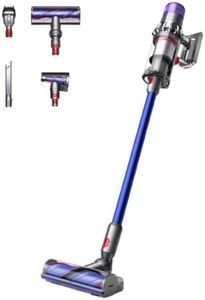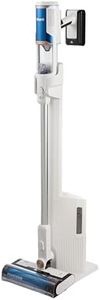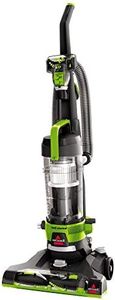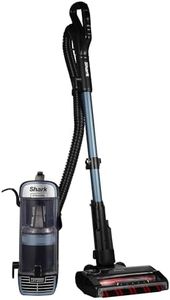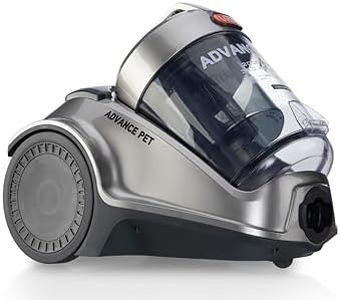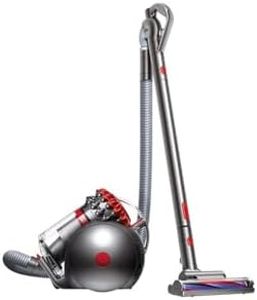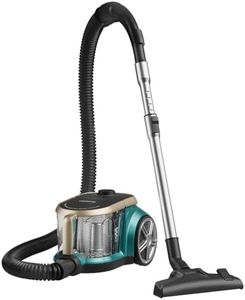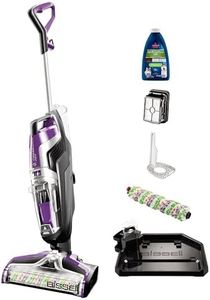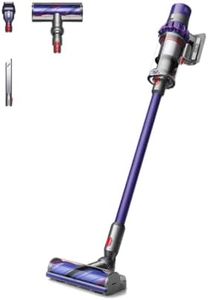We Use CookiesWe use cookies to enhance the security, performance,
functionality and for analytical and promotional activities. By continuing to browse this site you
are agreeing to our privacy policy
10 Best Commercial Vacuums
From leading brands and best sellers available on the web.Buying Guide for the Best Commercial Vacuums
Choosing the right commercial vacuum is all about matching the machine to the space you need to clean and the work you need it to do. Commercial vacuums are built to handle larger areas, tougher dirt, and more frequent use than residential models. Think about the size and type of your space, the surfaces you'll be cleaning, and how mobile or easy-to-use you want the vacuum to be. Understanding the key specifications will help you narrow down your choices so you find a vacuum that’s efficient, reliable, and the best fit for your cleaning tasks.Vacuum TypeThe type of vacuum—upright, canister, backpack, or wet/dry—is important because each is suited to different work environments. Uprights are best for large carpeted areas, canisters offer flexibility and can handle both floors and above-floor cleaning, backpack models are ultra-portable for moving quickly through tight spaces, and wet/dry vacuums are built for areas prone to spills or for cleaning up both liquids and solids. Consider the layout and demands of your area: for wide, open carpets, uprights work great; for spaces with lots of furniture or stairs, canisters or backpacks might be better; and for workshops or kitchens, wet/dry vacuums are a strong choice.
Power (Amps/Watts/Horsepower)Power ratings, shown as amps, watts, or sometimes horsepower, indicate the strength of the motor and suction capability. Higher numbers mean more suction, which helps with deep cleaning or picking up heavier debris. Lower-powered vacuums are lighter and easier to handle, but may struggle with tougher messes. For daily or light cleaning, a moderate power level is often sufficient, while high-traffic areas or places with stubborn dirt may need a stronger motor.
Filtration System (including HEPA)The filtration system determines how well the vacuum traps dust and allergens. Standard filters will capture larger particles, but HEPA filters trap tiny particles (like pollen or pet dander) and are ideal for sensitive environments, such as offices, schools, or healthcare facilities. If maintaining air quality is crucial, opt for a vacuum with a HEPA or high-quality filter; otherwise, a standard filter may be suitable for general cleaning.
Capacity (Bag/Bagless)Capacity refers to how much dirt the vacuum can hold before you need to empty it. Larger capacity is important for big spaces or frequent cleaning because it reduces the number of times you have to stop and empty the bin or bag. Smaller capacity models are lighter and easier to maneuver but may require more frequent maintenance. Decide based on how large your cleaning areas are and how often you want to empty the vacuum.
Weight and MobilityWeight impacts how easy the vacuum is to move, especially up stairs or across large facilities. Lighter vacuums are easier to carry and push, while heavier ones may offer more power or durability. Mobility features like swivel heads or ergonomic handles also matter, especially if you or your team will be using the vacuum for long stretches. Choose a weight and design that's comfortable for those who will be using it most.
Cord Length (or Battery Runtime for Cordless)Cord length (or battery runtime, if cordless) affects how far you can clean before needing to switch outlets, recharge, or move the vacuum. Longer cords or longer battery runtimes are important for large or open spaces since they minimize interruptions. For smaller rooms, a shorter cord or battery life might be sufficient. Think about the layout of your cleaning area and choose something that offers enough reach for your needs.
Noise LevelNoise level, usually measured in decibels (dB), determines how loud the vacuum will be during operation. Quieter vacuums are ideal for environments where noise can be disruptive, such as offices, schools, or hotels, while noise might be less of an issue in warehouses or industrial spaces. If you need to clean during business hours or in sensitive areas, consider a vacuum with a lower noise rating.
Durability and Build QualityCommercial vacuums are built to endure frequent, heavy-duty use. Durability depends on the materials used (like reinforced plastics or metal components) and the reputation for reliability. For high-use environments, seek out models that are known for robust build quality, as they’ll stand up better over time. If your cleaning needs are occasional, durability might be less critical, but strong build quality is always a plus.
